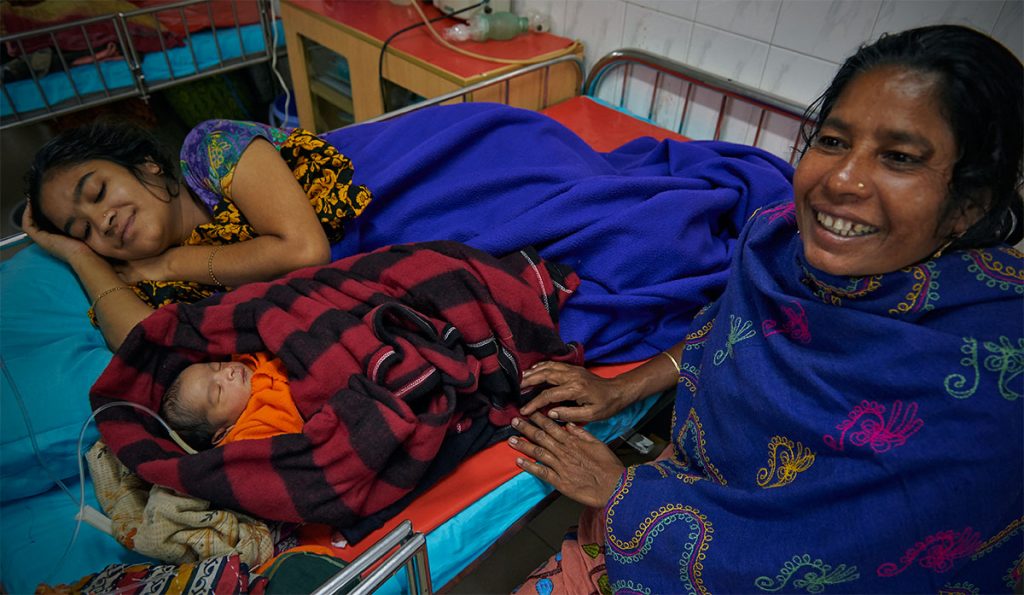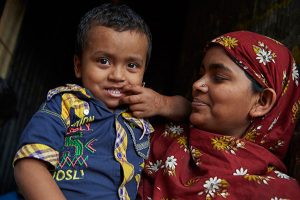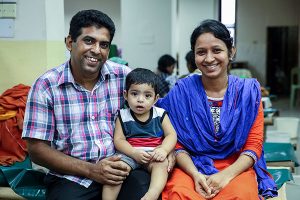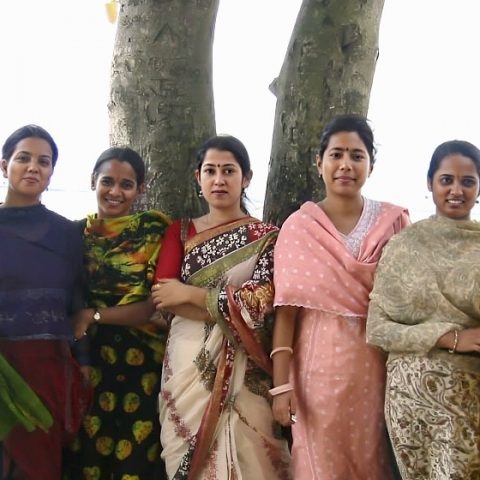It is estimated that nearly six million children worldwide will die before reaching their fifth birthday. This is in spite of the global concerted efforts of governments, civil societies and international organisations to reduce child mortality through the achievement of Millennium Development Goals (MDGs).

icddr,b researchers analysed the seven data sets of Bangladesh Demographic and Health Survey conducted so far for rural Bangladesh to understand the trend of socioeconomic inequalities in under-five mortality and the role of maternal education in reducing the inequalities. Photo: Shehzad Noorani / icddr,b
Nevertheless, concern regarding equitable progress was raised by many international bodies such as Commission on Social Determinants of Health and endorsed by all global and national policies and programmes. While these goals and targets, such as MDGs and SDGs, along with public health and development programmes were instrumental in bringing the number of deaths down by 56 per cent, from 93 deaths per 1,000 live births in 1990 to 41 in 2016, more than half of deaths in children under-five could be treated or prevented by implementing or adopting simple interventions with equitable access.
This success in reduction of under-five mortality also extends to Bangladesh, which saw an impressive 75 per cent decline, from 144 deaths per 1,000 live births in 1990 to 38 in 2015, lower than the global average of 41 per 1,000 in 2016. This was achieved through the successful application of pro-public policies including childhood immunisation, use of ORS, exclusive breast-feeding practices, improved nutrition, access to family planning services, microfinance, free female literacy, and many other woman-focused development programmes). However, it is important to review what the country has achieved to reduce socioeconomic inequality in under-five mortality and whether maternal education, a very important determinant of child mortality, has been effective in reducing these inequalities.

Children of mothers with no schooling had 1.88 times higher mortality than those whose mother had six or more years of schooling. Photo: Shehzad Noorani / icddr,b
In Bangladesh, socioeconomic inequality in under-five mortality persisted despite impressive reduction in mortality during the last 20 years. icddr,b researchers analysed the seven data sets of Bangladesh Demographic and Health Survey conducted so far for rural Bangladesh to understand the trend of socioeconomic inequalities in under-five mortality and the role of maternal education in reducing the inequalities. The first Bangladesh Demographic and Health Survey was conducted in 1993, thus the analysis covered a period of 20 years.
The analysis revealed that the under-five mortality rate for rural Bangladesh steadily declined over the years from 128 per 1,000 live births in 1994 to 48 in 2014. Females had an 8 per cent lower mortality rates than males. Dr Asiful Haidar Chowdhury, senior statistician at icddr,b and one of the authors of the article, explained, “the higher male mortality than female is somewhat different than reported earlier, where female children aged 1-4 years had higher mortality than males, while males had higher mortality than females during neonatal period. The present analysis examined under-five mortality in which the neonatal deaths formed the major part due to rapid decline in childhood mortality during age 1-4 years of life”.
Children of mothers with no schooling had 1.88 times higher mortality than those whose mother had six or more years of schooling. Similarly, children from low asset category households had on an average 1.17 times higher mortality rate than those from high asset category households. Inequality as determined by the mother’s education disappeared in recent years while inequality by household socioeconomic condition persisted throughout the study period. The pattern of inequality by sex, mother’s education, and household socioeconomic status has not had significant statistical changes over the years, and mothers’ education did not reduce socioeconomic inequalities.

Photo: Shehzad Noorani / icddr,b
The authors asserted that the socioeconomic differentials observed for under-five mortality can be explained using the proximate determinant framework for child survival developed Mosley and Chen. The decreasing trend in under-five mortality was consistent with changes in the proximate determinants of child survival in the country. Proximate determinants included maternal factors, environmental contamination, nutrient deficiency, personal illness control, and injury.
Health and population programmes have been effective in increasing immunisation coverage, use of ORS for managing diarrhoeal diseases, and increasing contraceptive use. Development activities on the other hand raised literacy, especially among females, demand for modern health services, and reduction of poverty. However, socioeconomic inequality still exists in both under-five mortality and proximate determinants of child survival.
In conclusion, the authors stipulated that the socioeconomic inequality in under-five mortality is showing resistance against further reduction. An assessment of the adequacy of the existing programmes taking the proximate determinants of child survival into consideration will be useful for further improvement.
Dr Abbas Bhuiya, the principal investigator of the study and former deputy executive director at icddr,b, reiterates that “there are multifarious causes and reasons for children from disadvantaged families with lower mother’s education, socioeconomic status to experience higher mortality. Ensuring equitable coverage of public health measures, such as immunisation, prevention of deaths from drowning, integrated management of childhood illnesses, including use of ORS, adoption of hygiene practices can be of help”.

